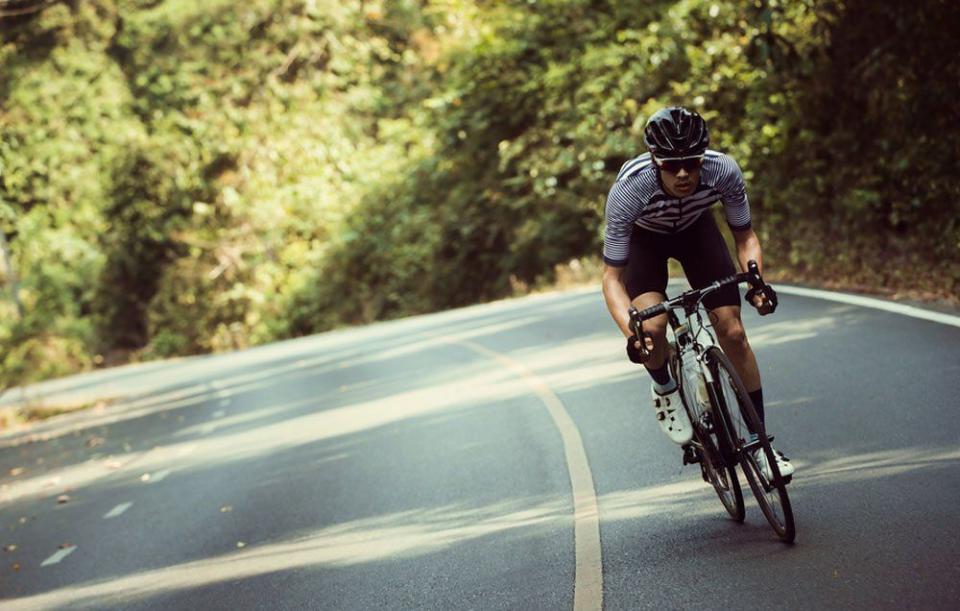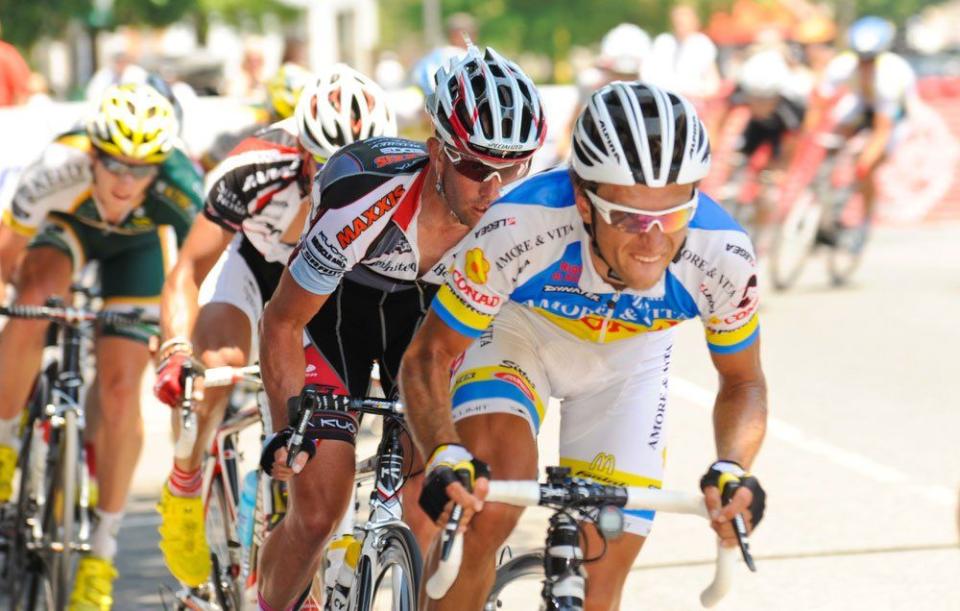A Full Endurance Training Plan for Time-Strapped Cyclists

There's no bigger bummer than going out for your first big ride after the dark days of winter and coming home limping, beaten up, and hating life. I do brevets — 200k, 300k, 400k endurance rides — but I would always suffer like a dog on the first one of the year. That's because winter spin classes, trainer sessions and even most mountain bike rides are usually just too short to prep our cycling muscles for big long-distance efforts.
So I realized I had to think smarter. If there was no time to ride longer, there was only one option: go harder. Going harder means intervals, which most cyclists love to hate, and weight lifting, which we tend to avoid like the plague.
RELATED: How Strength Training Can Help You Be a Better Cyclist
If you feel that way, it’s time to get over it; intervals and weights are well-documented and time-effective super-shortcuts for building cycling fitness and power. Here’s the case for trying either (or both together) to jump start your season, including an introduction to “Maximum Overload for Cyclists,” a ground-breaking weight workout used by cycling land-speed world record holder, Denise Mueller. First, intervals:
Intervals for Endurance

Nothing is a more effective time-saver for a cyclist than sprint intervals. These short, all-out, crazy-hard anaerobic efforts last just 15 to 30 seconds each.Six to 8 of them (with 90 seconds or two minutes of rest in-between to bring your heart rate down), can be done in 20 minutes. The key is that each interval has to be done to the point of exhaustion, which cues your body to get stronger and faster. “Omigod — I better upgrade myself in case this happens again!” it thinks, dispatching an army of hormones like HGH and testosterone to do build muscle.
Those upgrades — in speed, structural integrity, oxygen-processing capability (VO2 Max), lactic-acid buffering and overall endurance — have been well-documented in numerous studies. One from 2006 done by Canada’s McMaster University found that just 20 minutes of daily intervals gave riders the same fitness gains as those who rode steady for two hours—that’s six times as long! And it’s not just for the Spring heroes: sprints work for high-level athletes in mid-season form as well. A 2005 New Zealand study found that 8 to 12 sessions of intervals increased speed an average of 8.1% in a 40k time trial with a 8.1 rise in power. In short, a handful of intervals can give you gains in aerobic fitness that match longer, slower workouts, while also providing the anaerobic and health benefits that steady-state riding does not.
RELATED: This Is Your Body on Base Training
Interval Fundamentals
· Go all-out. You get the most benefit from going to “failure” or the point where you are so exhausted that you can no longer go hard or maintain good form.
· Start fresh: Come into an interval session fully rested. Pedal very lightly between intervals for 90 seconds to two minutes to bring your heart rate down.
·Do 6 to 8 15-30 second sprints per session: If you can’t do 6 all-out, work up to it. If you can do more than 8, it means you aren’t doing them hard enough.
·Do no more than 2 or 3 sessions per week: Although cycling intervals beat you up less than running, they’re still hard on your body. You’ll need 48 hours to recover from a session.
Weights for Endurance

Traditionally, cyclists have shied away from weights, thinking any extra muscle mass messes with their power-to-weight ratio. What many don’t consider is that the muscle they gain usually replaces fat, which can allow them to ride longer and stronger even if they end up carrying more mass.
Weights are ideal for overloading your muscles. Overload— i.e. greater-than-normal stress or resistance— is difficult to achieve through regular cycling or even intervals, which means you can miss out on the rapid recovery benefits and strength-building that come with it. A gym workout can also precisely target the main cycling mover muscles (quads, hams and glutes), as well as the supportive muscles around them, giving you more resilient, fatigue-resistant power on the bike than you’d get from several hours of cycling.
RELATED: The Problem With Doing a Different Workout Every Day
Of course, sports researchers have also been studying the cycling-weight lifting connection, finding that even short, simple weight workouts like half-squats, single-leg presses or leg extensions with heavy weights can yield positive performance results. One 2001 study showed that heavy weight training helped young, elite competitive cyclists improve their 45-minute time-trial times more than light, high-rep training. Other studies have uncovered similar effects on cycling economy and time to exhaustion.
Learn four essential strength moves for cyclists:
Weight-training Fundamentals
· Lift heavy weights. Find the heaviest weight that you can do for 6 reps; you should be struggling on the 7th. Like intervals, going to “failure” with weights maximizes the improvement later.
· Start fresh: Come into a weight session fully rested, so you can lift more.
·Do 2 or 3 sessions per week: Muscles need 48 hours of recovery after hard work.
·Prepare to ache the first few weeks: Expect your butt and other virgin muscles to scream for days after you get started— even if you stick to lighter weights. Bike speeds will also be slower in this this phase. Stick with it: you’ll be ache-free and more powerful by the end of the third week
Putting it all Together: Maximum Overload and P.A.P.

Remember the aforementioned superwoman Denise Mueller? She recently set the paced cycling speed world record, hitting 147.7 mph at the Bonneville Salt Flats last September.
To put down that kind of power, she couldn’t afford to leave any muscle fiber untrained— so she utilized a strength program called Maximum Overload. Her 40-minute program includes heavy deadlifts, leg presses and explosive walking lunges, culminating in a 15-minute weighted walking lunge workout. All of these exercises target and overload cycling mover muscles to create sustainable power on the bike.
You can save even more time by putting weights and intervals together in one super 60-minute “P.A.P.” workout. That stands for Post-Activation Potentiation, a creation of famed researcher Tudor Bompa. Bompa found that a heavy weight workout actually got you safely warmed up for an interval session by stimulating the central nervous system and preparing the connective tissues— allowing you to push even harder and get a bigger overload, which ultimately replaces even more base miles.
Sample MAXIMUM OVERLOAD Weight-training “5-20-15” workout
Total = 40 minutes
5-Minute Unweighted Dynamic Warmup
Do an up-and-back of each of these:
·Walking lunge with twist
·Sidestep Lunge with arms up
·Hip Thrust Glute Bridge
·High-knee Skips
20-Minute Core Strength and Upper Body workout
Do three sets of each. Find the weight that lets you do 6 rep-max to failure.
·StaticPlank - 1 min.
·Ab wheel rollout or Body Saw - 1 min.
·Bent-over dumbbell row - 6 rep-max
·Pull-ups - max
·Push-ups -max
·Deadlifts — either with dumbbells or a hex-bar - 6-rep max
·Single Leg press - 6 rep-max (warm-up with double-leg press)
15-Minute Lower Body Power workout
Explosive weighted walking lunge (with a dumbbell in each hand)
(Using 12-step-max dumbbell weights, do mini-sets of 6 steps and rest 15 seconds. Repeat that sequence for 2 minutes and rest three minutes. That is one set. Do three sets.)
Roy M. Wallack is the co-author of Maximum Overload for Cyclists.
You Might Also Like

